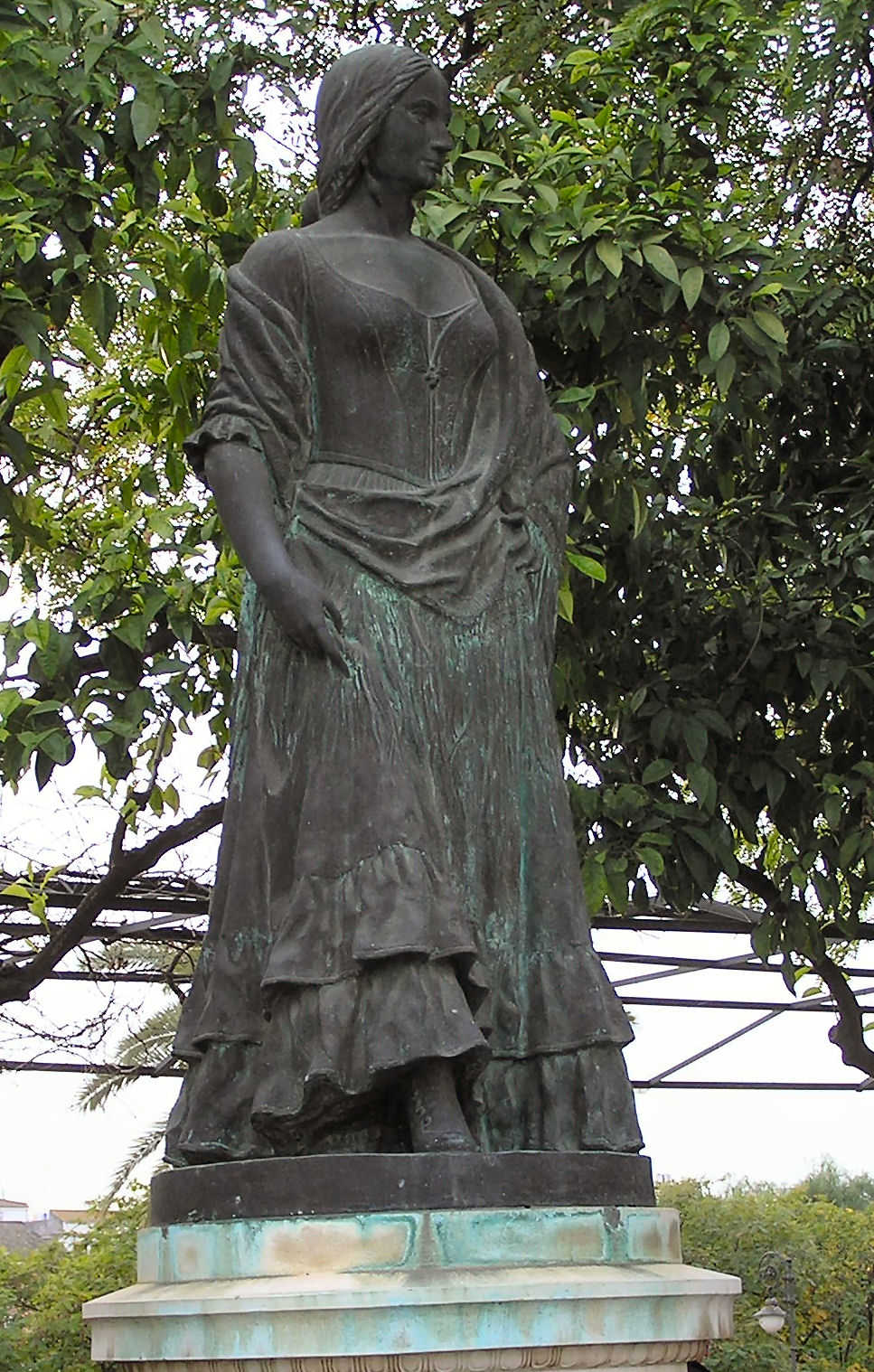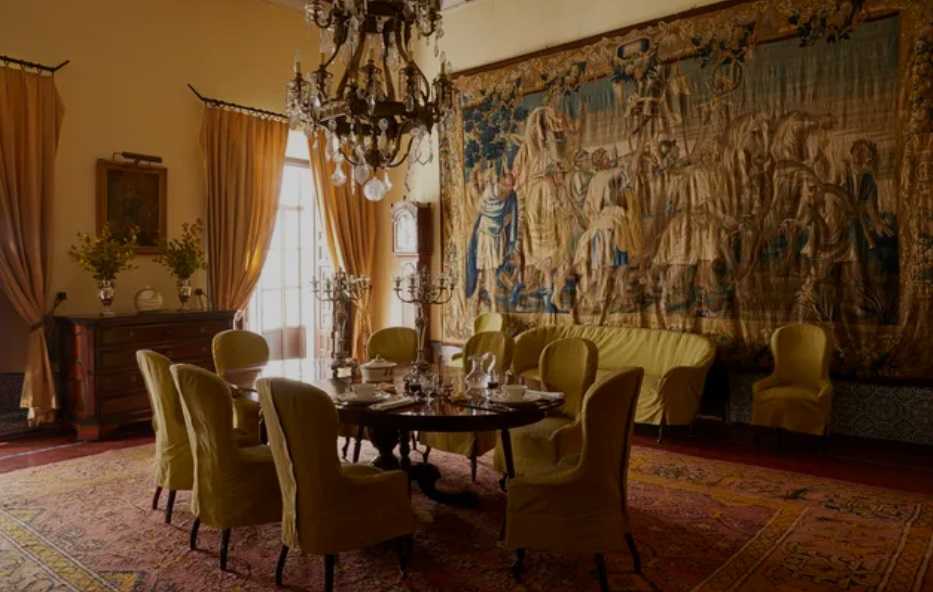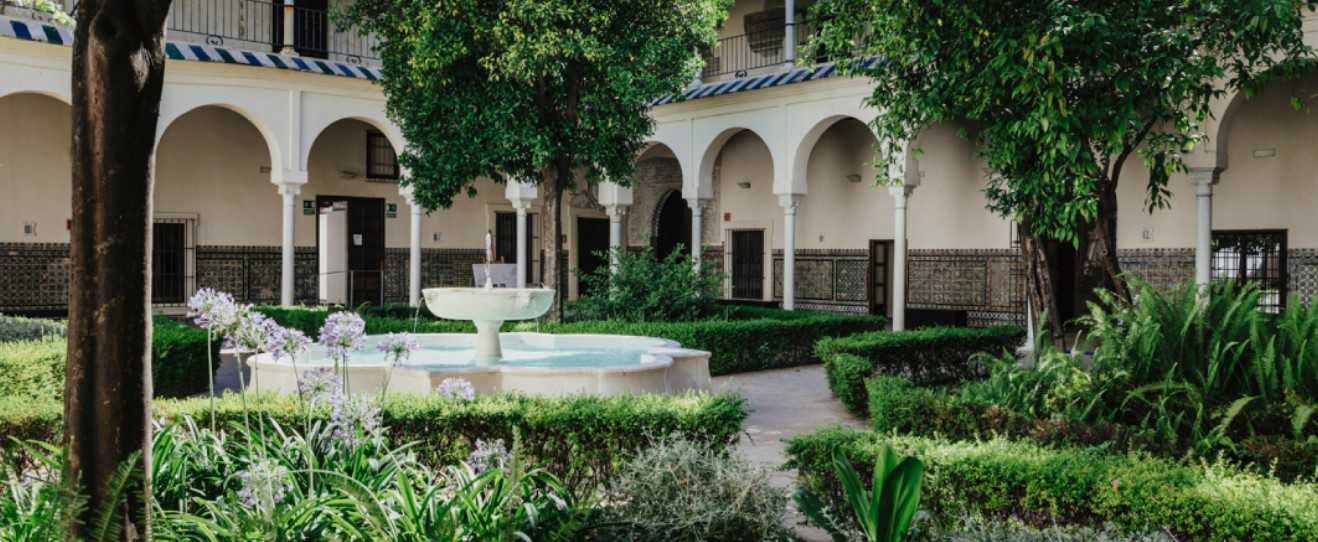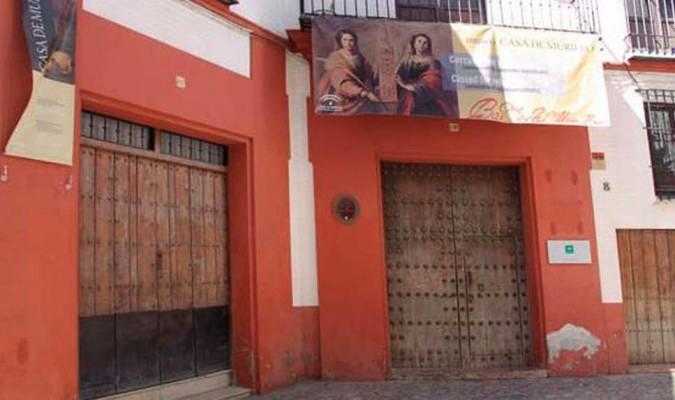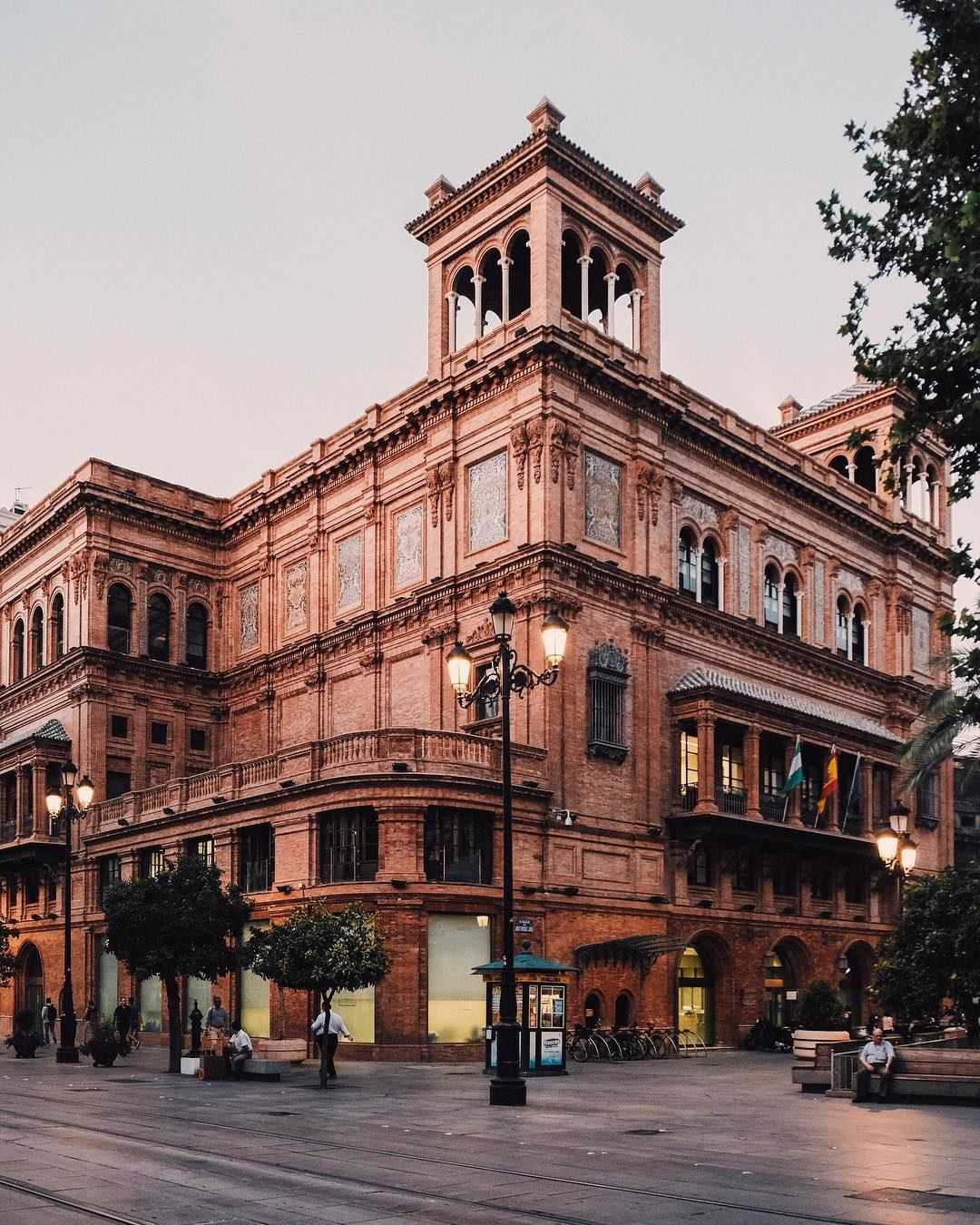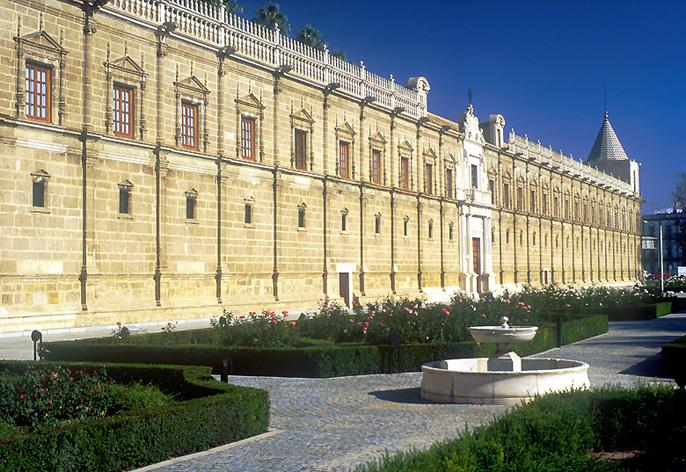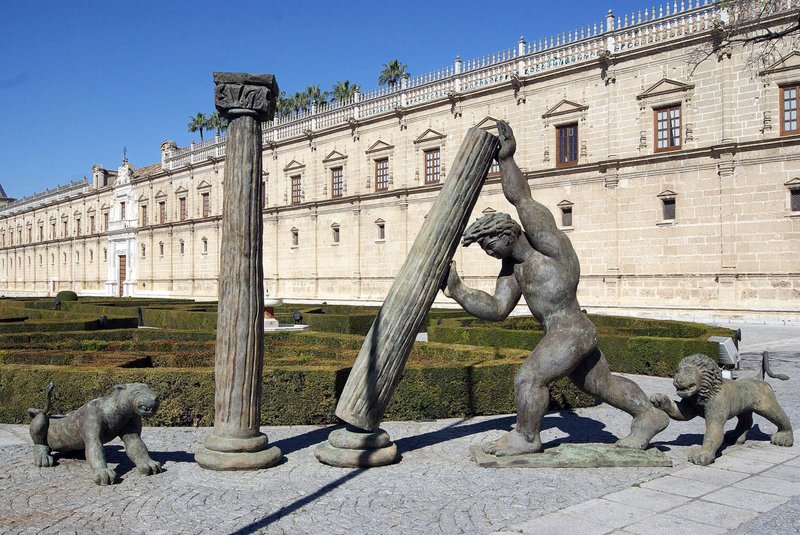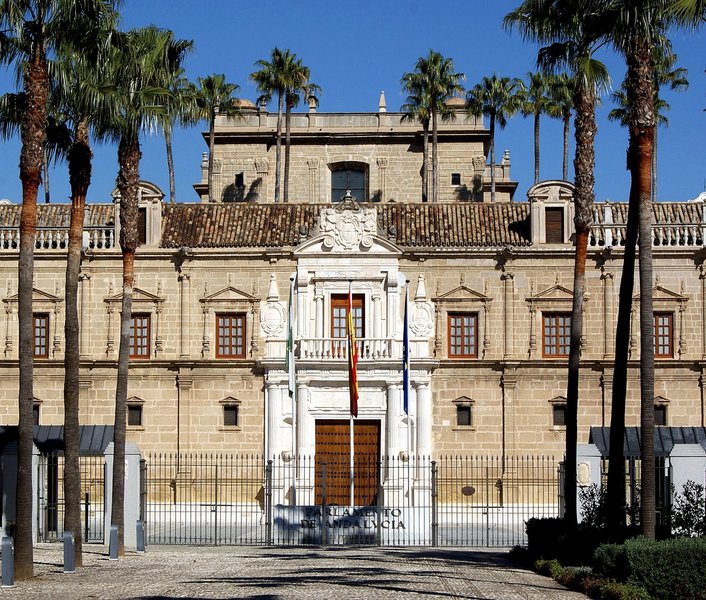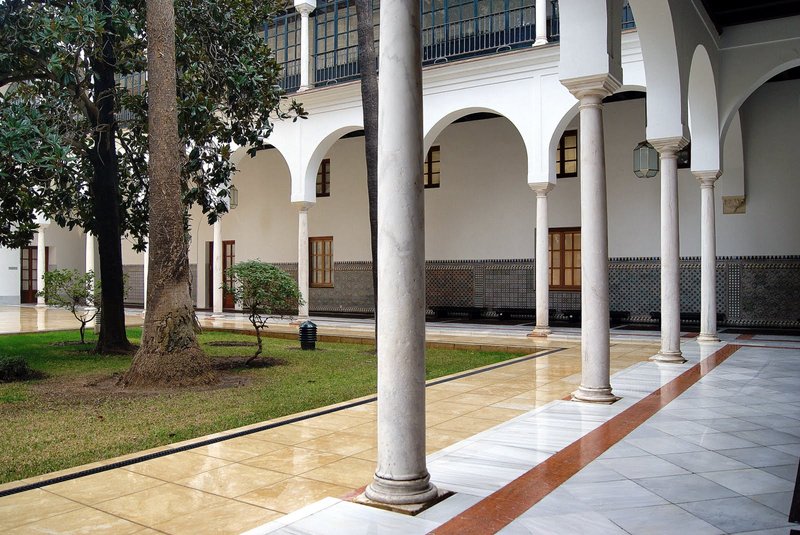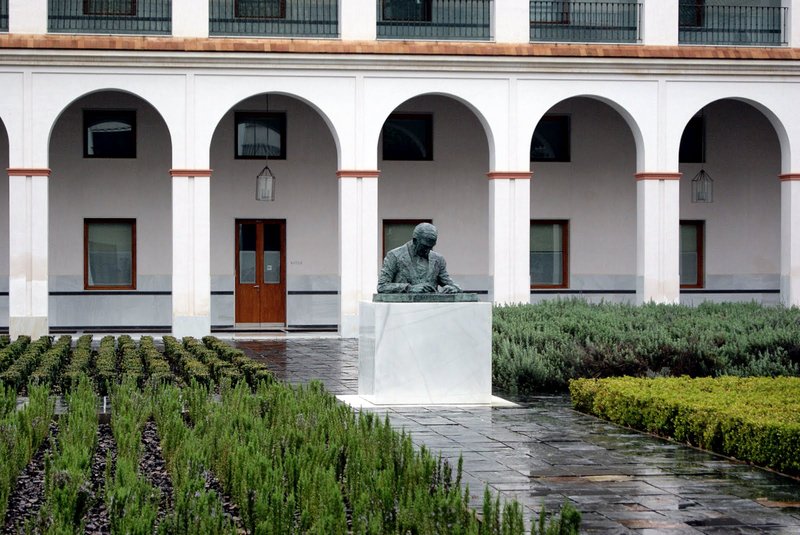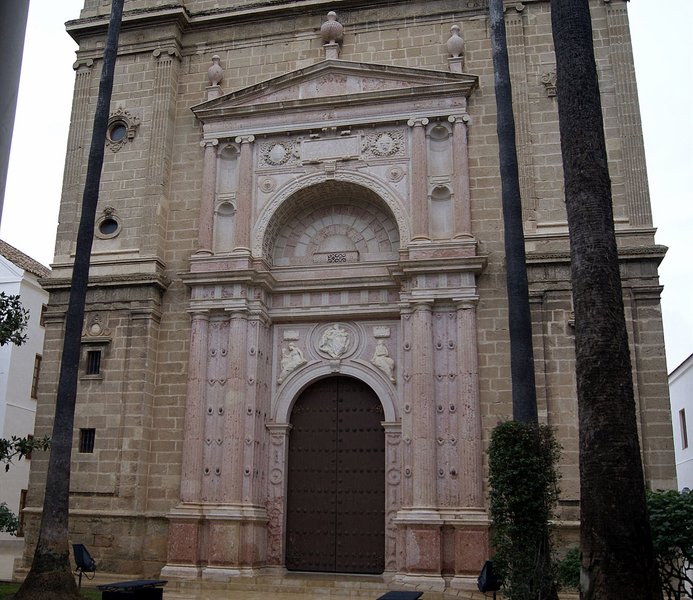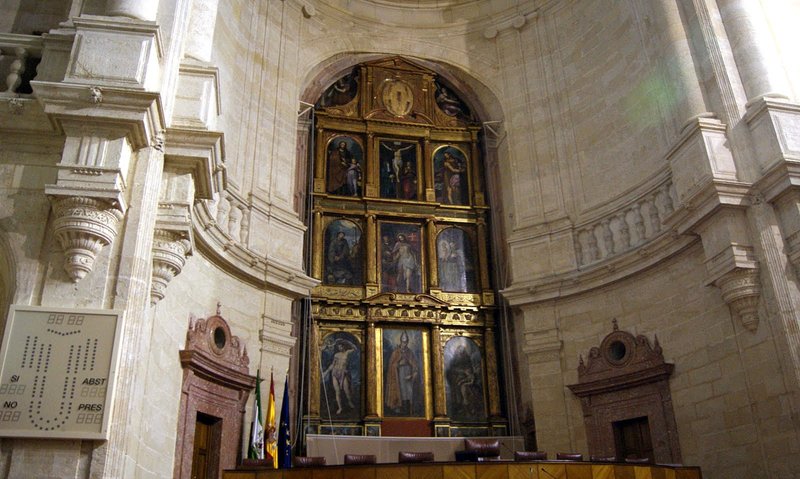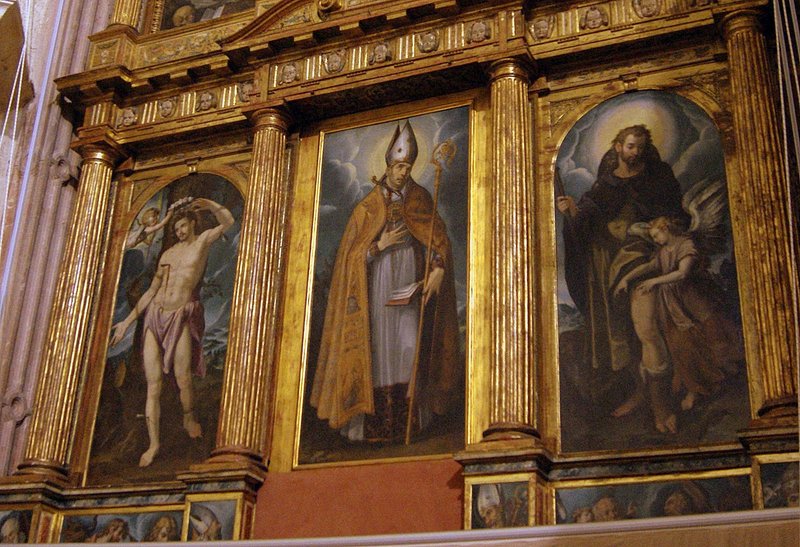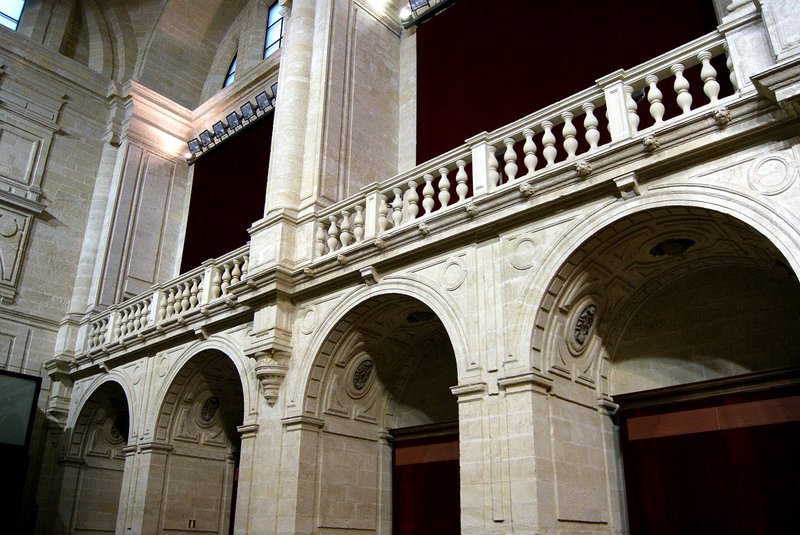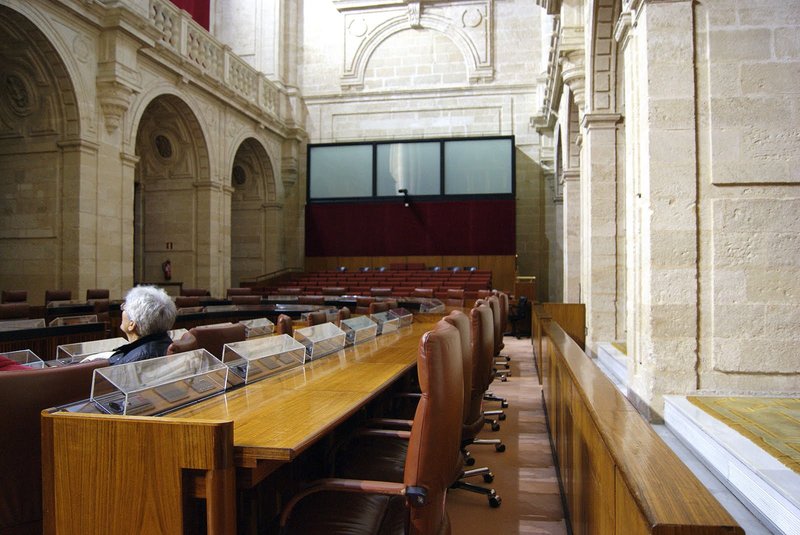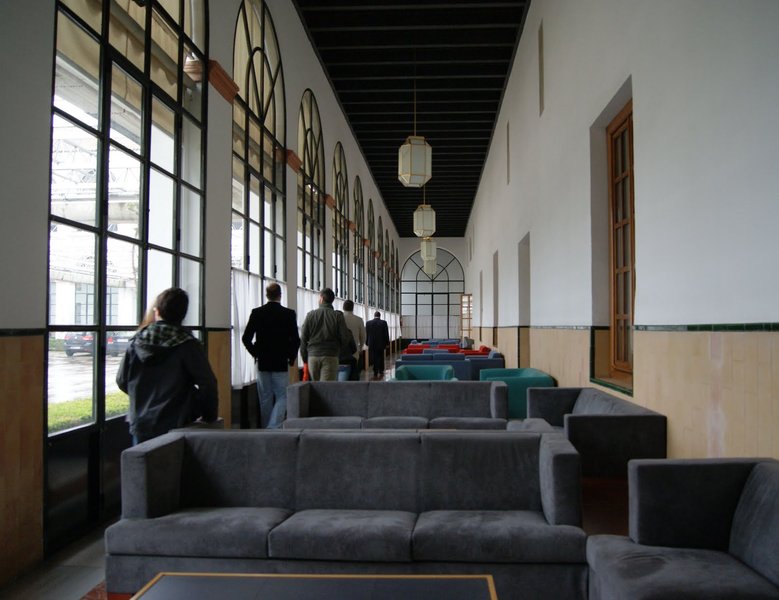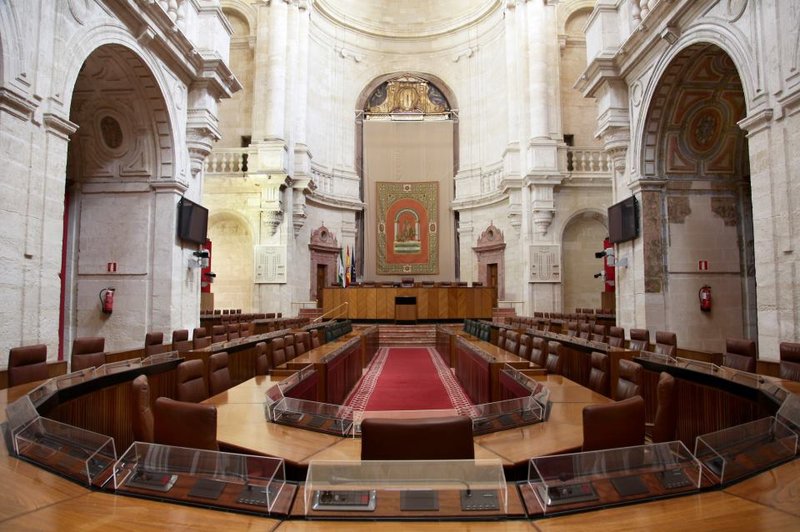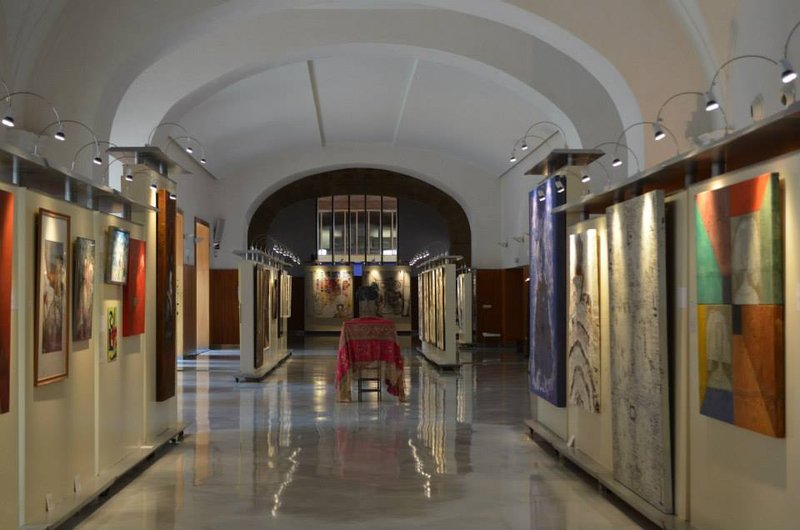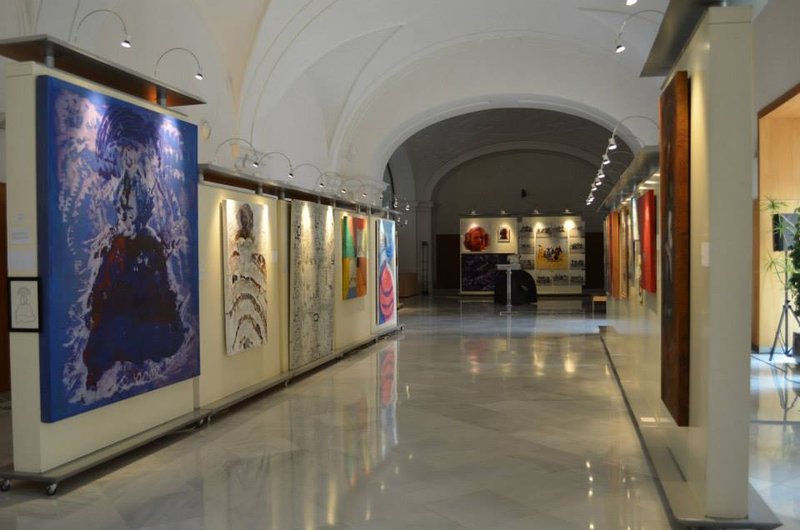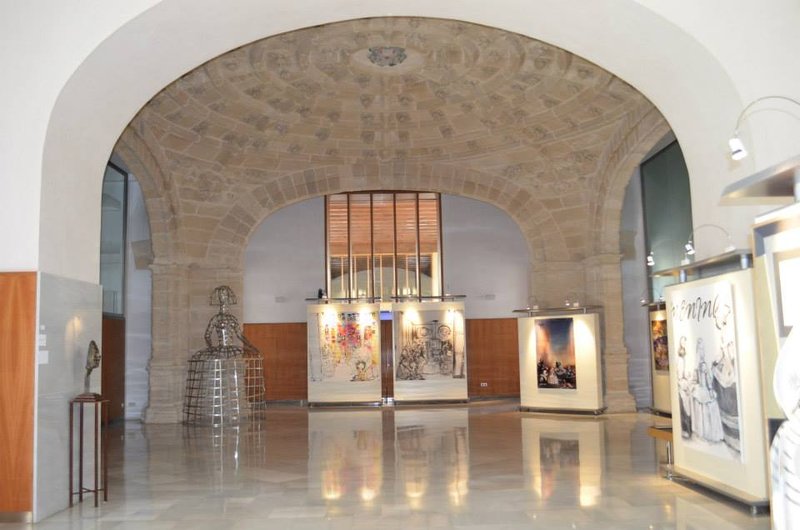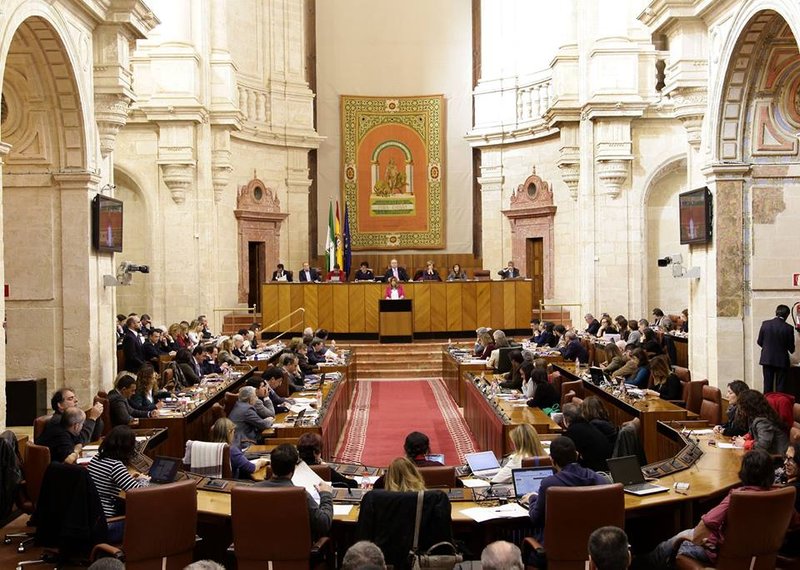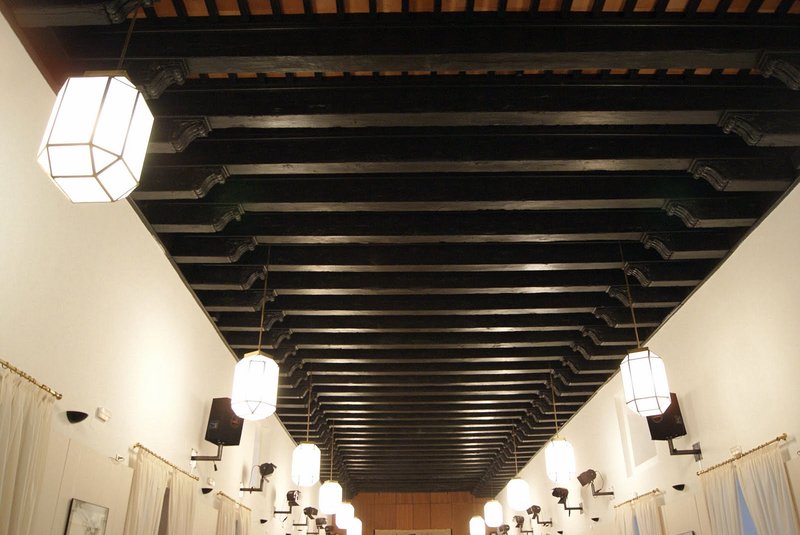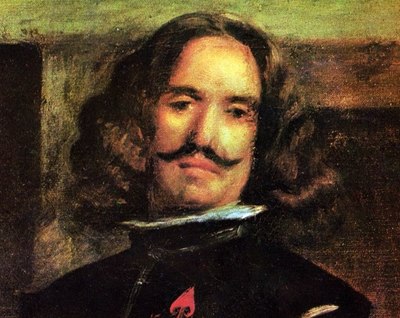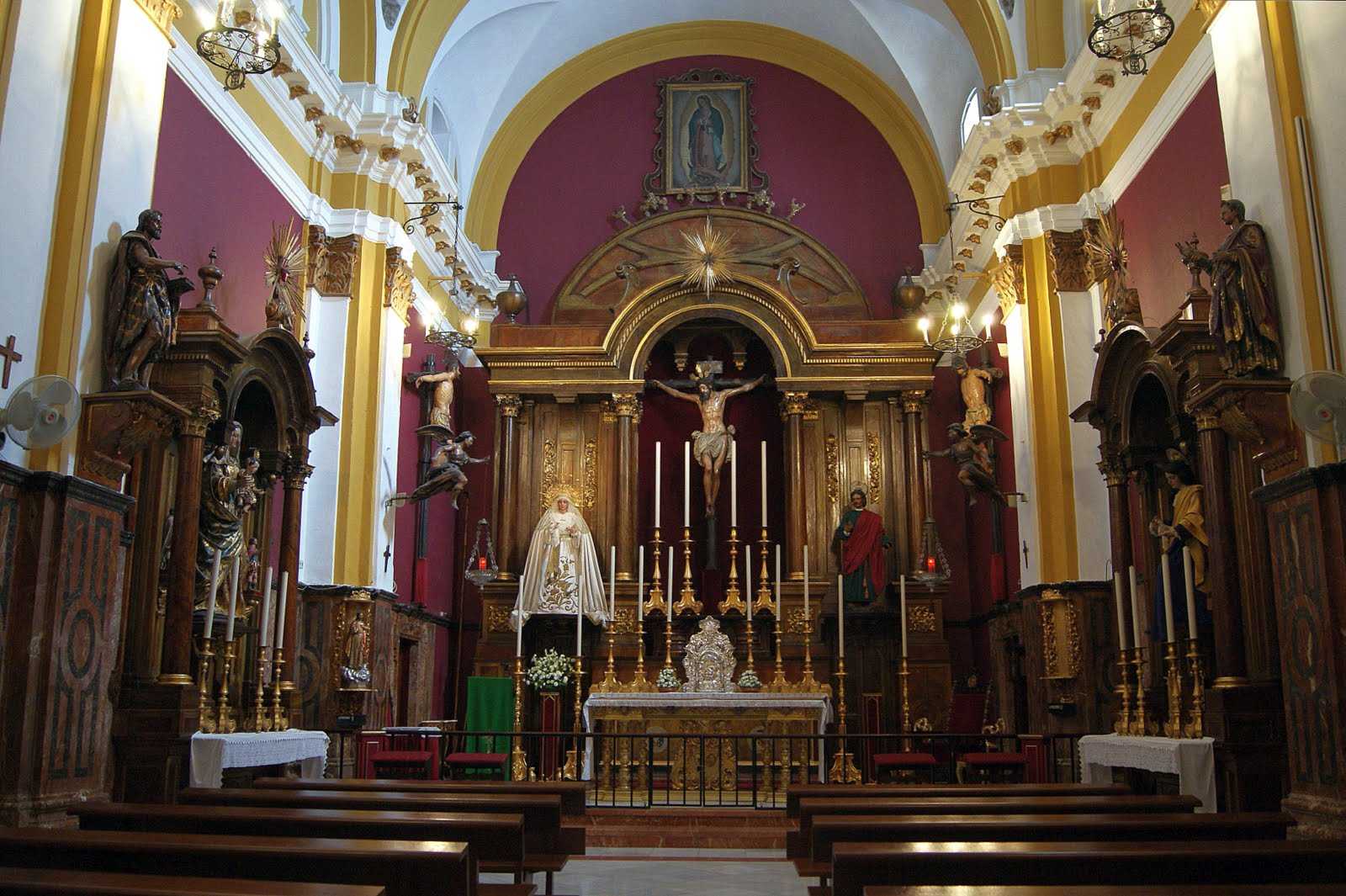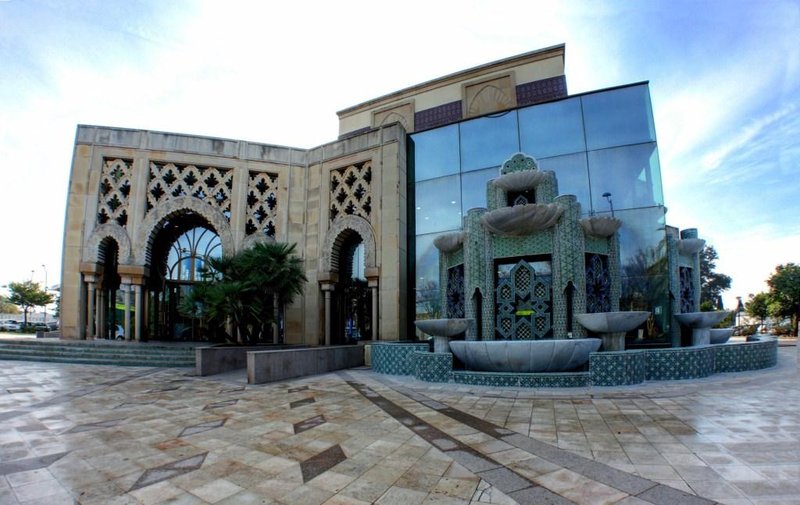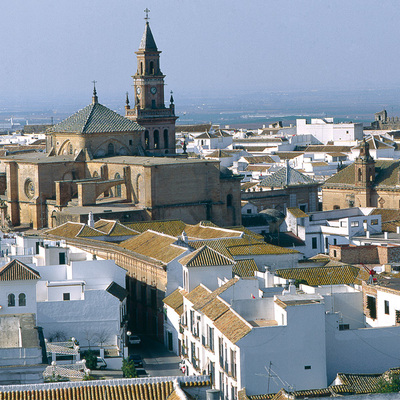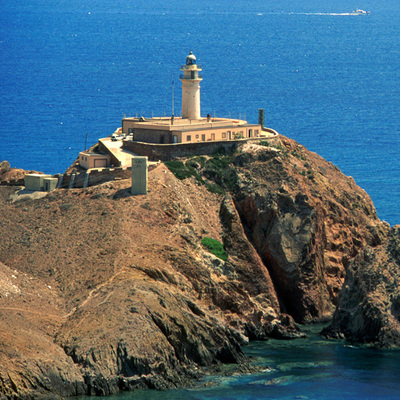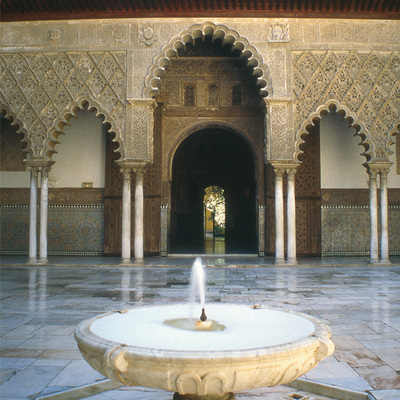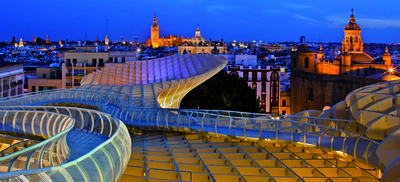Hospital of the Cinco Llagas Parliament of Andalucía
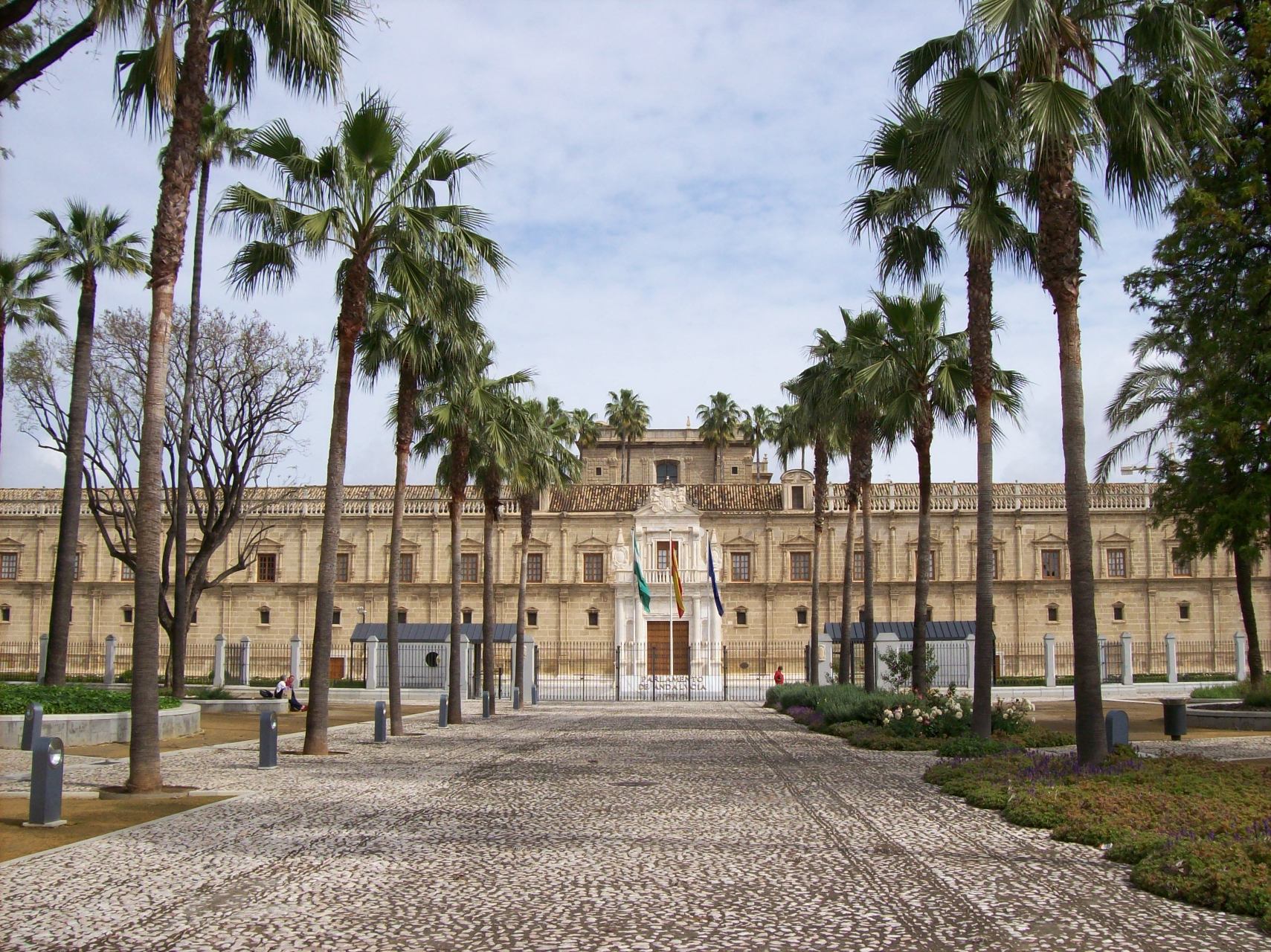
The former Hospital de las Cinco Llagas, also known as the Hospital de la Sangre, is located in Seville, opposite the walls of the and the Macarena gate. It is currently home to the Parliament of Andalusia. Construction began in 1546 under Fadrique Enríquez de Ribera, who died in 1539. It was designed by Martín de Gainza, who directed the works until his death in 1556.
Hernán Ruiz II took over the work in 1558 , and the hospital opened a year later, although it was not complete. It has a rectangular layout, and was designed around 10 courtyards, of which only nine were built, and only eight remain today. The Hospital was dedicated to the treatment of women and is one of the most important buildings in 16th-century Spanish architecture.
The outstanding element of the building is undoubtedly the church. Located in the central Siniestros courtyard, it has a Latin-cross layout and is considered one of the masterpieces of Spanish Mannerism. The church is taller than the rest of the building. Today it is used for plenary sessions. It has an outstanding Main Altarpiece by Diego López Bueno, with paintings by Alonso Vázquez, to a design by Asensio de Maeda.
The building was in use until 1972. After years of neglect, plans to convert it into the home of the Parliament of Andalusia were drawn up in 1986, with the building reopening on 28 February 1992 (Andalusia day). Restoration of the building was finished in 2003, with completion of work on the courtyards and rooms that had not been undertaken during the 1980s.
Undefined schedule
Free. Visit must be arranged in advance by telephone or on the website.
Ideas for your trip
Services and infrastructure
Segments
Specialties
Open to visitors
You may be interested
